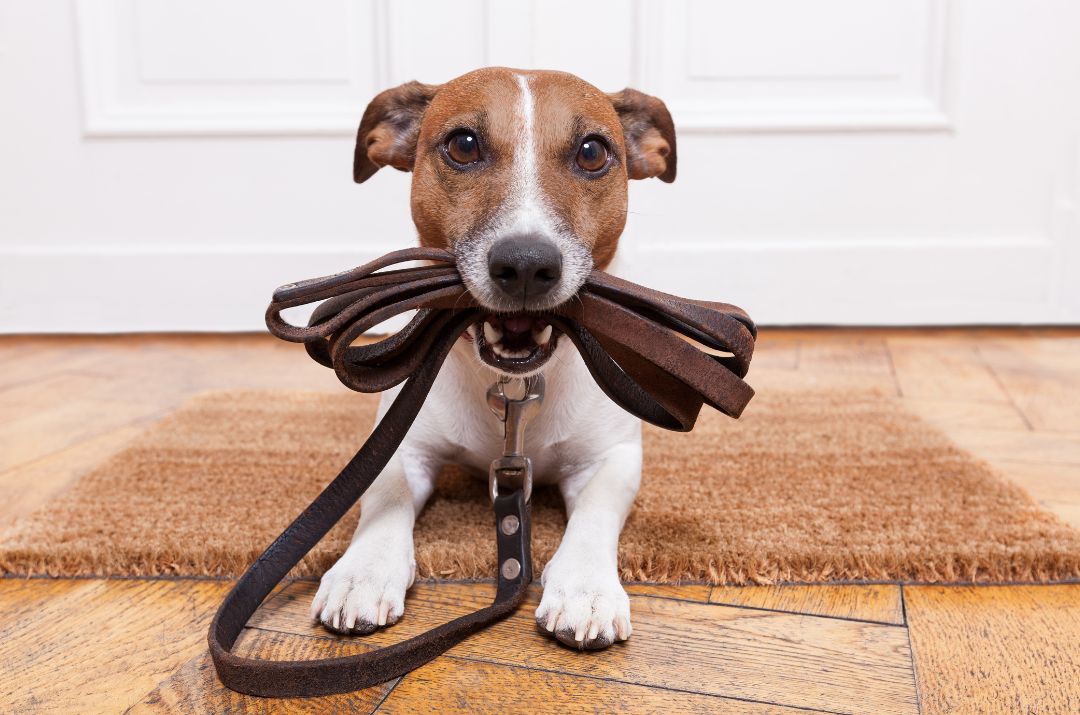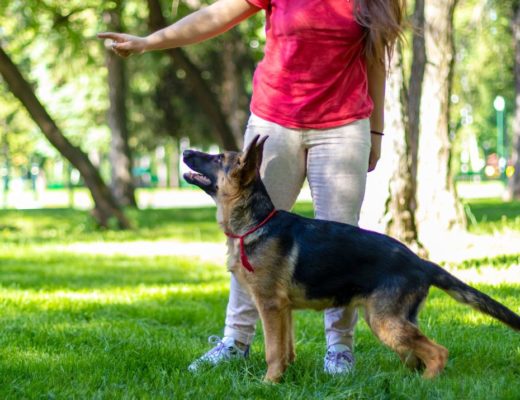Leashing up your furry companion is not just about controlling their movements; it’s an opportunity to strengthen your bond and ensure their safety. Whether you’re a first-time dog owner or looking to enhance your leash training techniques, this guide will equip you with the knowledge and skills to make your walks enjoyable and stress-free for both you and your four-legged friend.

- Contents:
- Choose the Leash
- Introduce the Leash
- Establish a Walking Technique
- Common Leash Issues
- Conclusion
Choose the Leash
Selecting the appropriate leash for your dog is the first step towards successful leash training. Consider the following options:
- Standard Leash: A typical six-foot leash provides adequate control and allows your dog enough freedom to explore their surroundings.
- Retractable Leash: This type of leash offers variable length, giving your dog more freedom to roam. However, it requires extra caution as it can lead to unexpected incidents if not used properly.
- Hands-Free Leash: Designed for convenience, hands-free leashes attach around your waist or across your shoulder, allowing you to maintain control while keeping your hands free for other activities.
| Leash Type | Description | Pros | Cons |
|---|---|---|---|
| Standard Leash | ?? A typical six-foot leash | ✔️ Provides control | ❌ Limited freedom of movement |
| Retractable Leash | ??? Offers variable length | ✔️ Allows more freedom to explore | ❌ Requires extra caution |
| Hands-Free Leash | ??? Designed for convenience | ✔️ Keeps hands free | ❌ May lack full control |
Introduce the Leash
Some dogs may initially find the leash intimidating. Follow these steps to help them get accustomed to it:
- Show the Leash: Allow your dog to sniff and investigate the leash to familiarize themselves with its presence.
- Positive Associations: Pair the leash with positive experiences by rewarding your dog with treats and praise whenever they interact with it.
- Controlled Exposure: Attach the leash to your dog’s collar or harness while inside your home, gradually increasing the duration and distractions to acclimate them to its feel.
Establish a Walking Technique
Once your dog is comfortable with the leash, it’s time to focus on their walking behavior:
- Loose Leash Walking: Teach your dog to walk calmly beside you with a loose leash, rewarding them for staying by your side.
- Use Verbal Cues: Introduce simple commands like “heel” or “let’s go” to guide your dog’s movement and reinforce positive behavior.
- Consistency is Key: Practice walking techniques regularly and be patient with your dog’s progress. Over time, they will learn to associate leash walks with positive experiences.

Common Leash Issues
Leash training can sometimes present challenges. Here are solutions to common problems:
- Pulling: If your dog pulls on the leash, stop walking and wait for them to return to your side. Reward them for walking politely beside you.
- Reactivity: If your dog exhibits aggressive or fearful behavior towards other dogs or stimuli, seek professional help from a certified dog trainer to address the underlying issues.
- Distractions: Dogs are naturally curious. Encourage focus by incorporating basic obedience commands during walks and gradually expose them to distractions in controlled environments.
Conclusion
Mastering the art of dog leash training requires patience, consistency, and positive reinforcement. By following the steps outlined in this guide, you can transform your walks into enjoyable experiences that promote your dog’s well-being and strengthen the bond you share. Remember, every dog is unique, and progress may vary. Stay committed, celebrate small victories, and seek professional guidance if needed. Get ready to embark on an exciting journey of exploration and adventure with your furry companion by your side!
FAQ
How long does it take to leash train a dog?
The duration of leash training can vary depending on your dog’s personality, age, and previous experiences. It may take anywhere from a few weeks to a few months to fully train your dog to walk politely on a leash. Consistency, patience, and positive reinforcement are key factors in expediting the training process.
Can I use a retractable leash for leash training?
While retractable leashes offer flexibility, they are not ideal for leash training purposes. The extended length and constant tension can make it difficult to teach your dog loose leash walking. It’s recommended to use a standard leash or a hands-free leash for better control and training outcomes.
What should I do if my dog pulls on the leash during walks?
If your dog pulls on the leash, stop walking and wait for them to return to your side. Reward them with treats and praise for walking politely beside you. Consistency in this practice will help your dog understand that pulling results in no progress while walking calmly by your side brings rewards.
My dog gets anxious or reactive during walks. How can I address this issue?
If your dog exhibits anxiety or reacts aggressively towards other dogs or stimuli, it’s advisable to consult a certified dog trainer or behaviorist. They can provide guidance and create a tailored training plan to address the underlying issues and help your dog overcome their reactivity.
Should I allow my dog to sniff while on a leash?
Allowing your dog to sniff their surroundings during walks is beneficial for their mental stimulation. However, teach them a cue, such as “go sniff,” to indicate when it’s appropriate to explore. This way, you maintain control over the walk while still giving them opportunities to indulge in their natural instincts.
How often should I practice leash training with my dog?
Consistency is key when it comes to leash training. Aim for daily training sessions, starting with short walks and gradually increasing the duration as your dog becomes more comfortable. Regular practice will help reinforce the desired behaviors and make the training process more effective.
What if my dog refuses to walk on a leash altogether?
If your dog refuses to walk on a leash, try introducing positive reinforcement by rewarding them with treats and praise for small steps, such as approaching the leash or wearing a harness. Gradually build their confidence and associate the leash with positive experiences. If the issue persists, consult a professional dog trainer for further guidance.




